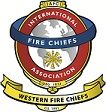Following on the heels of unprecedented economic uncertainty for the fire service, nearly all communities in the U.S. are experiencing significant changes – some are experiencing continued growth despite overall financial setbacks in the country; some are coming to terms with challenging unemployment levels, strained budgets, and a renewed backlash over the allocation of public dollars. Often, changing demands for services happen faster than the community’s ability to come to terms with them. Many fire departments find themselves falling farther and farther behind, forcing decisions to reduce---or even eliminate---services.
One of the greatest problems these departments now face is the lack of an identified standard of service against which to measure the impact of the changes. Without standards it’s hard to convince policy makers, faced with competing requests for new funds, that your organization truly needs the additional resources.
But anticipating and planning for change is very achievable. No “crystal ball” is required. Just a careful look at where your department has been, what it’s doing now, and how it can best address future demands for services.
1. Analyze your Community
The process starts with a look at how your community has changed over time, how it’s expected to change (whether continued growth or new expectations for emergency service providers), and how that will affect your department’s workload.
Growth is important to get your arms around. Most communities have a planning organization responsible for predicting growth in terms of population and development patterns. Very realistic projections can be developed by analyzing past growth, available land inventories, building permit activity, economic forecasts, and other factors. By using these projections with information on how previous changes in your community affected your response activity, you can predict your future workload fairly accurately.
While predicting the changing expectations can be less tangible from a data standpoint, it is equally as important to get your arms around as the growth projections. This element requires reaching out to the community – holding forums, attending functions, creating Blue Ribbon panels. Collaborating on expectations and the fundamental definition of how ‘good service’ is measured by your customers can realign your department on the mission of service.
2. Review Your Situation Now
Next, you will need to review your current fire and emergency service delivery system, develop a clear picture of your performance, and compare it against any locally adopted standards. These may include insurance ratings systems, National Fire Protection Association standards, and the experience of other similar communities.
This is also the time to consider ways to become more efficient---for example, adjusting how your department deploys current resources, changing dispatch practices, potential partnerships with other agencies and the like. It’s very important to ensure your service is operating as efficiently as possible before seeking new resources.
3. Create Performance Measures/Goals
A critical part of your planning process is the creation of performance measures and targets for response times, fire incident rates, and the like. If they already exist, your agency’s efforts are measured against them. If they don’t exist, a public process is used to define them. Performance measures help your community see what level of service it currently has, determine what level it would like, and address the cost of “bridging the gap,” if one exists.
4. Develop a Plan
Once measures and targets are established, a plan can be developed to achieve them. It can include a variety of strategies such as resource deployment, reorganization, service delivery, funding alternatives, fire station locations, cooperative ventures, partnerships and more.
The plan should identify the cost for each alternative and the level to which it meets your goals. You’ll also need to consider how each alternative affects other strategies or services. For example, if you relocate a fire station to better serve a high-demand area, how will it affect response time to areas of lower demand?
You’ll also need tools to monitor performance. Along with your established measures and targets, other indicators such as workload levels and staffing ratios can be very useful when it comes to making decisions about allocating future resources.
Fire service leaders are continually being asked to “do more with less.” In high change and high growth areas, this requires careful analysis, innovative thinking, and a long-term focus. But the end result can mean your community receives the best possible service at a cost that is both acceptable and affordable to those who must pay for it.
5. Professional Resources
With many departments having to cut administrative staff over the past few years to maintain response capabilities, these processes can be placed on the back burner. City managers are cautious about hiring more staff with the knowledge and abilities to guide us through these processes, and yet they still guard the travel funds that would allow current staff to gain the knowledge. A few years back, faced with a similar challenge, I partnered with ESCI (Emergency Services Consulting International). They were able to assist with their vast resources and knowledge to guide our department through the process to the desired outcome. Even after the deliverables were done, they were still there to support us and answer questions. Many times in the fire service we believe we must do it ourselves, but we don’t, we can partner with those that have a proven track record to assist us through these challenging times.
Mark Wendelsdorf
President, Western Fire Chiefs Association

www.wfca.com
--------------------------------
Emergency Services Consulting International (ESCI) is an international firm providing specialized, high quality, professional fire, police, communications, and EMS consulting services to organizations throughout the United States and Canada. ESCI has been meeting the needs of emergency services agencies since 1976 and is considered by many to be the nation’s leader in emergency services consulting. Combining Home and Regional office staff and personnel with over 40 field consultants, ESCI provides consulting services to municipalities, districts, nonprofit organizations, and the industrial and commercial community.

www.esci.us
Email: info@esci.us
Voice: 503.570.7778
Toll-Free: 800.757.3724